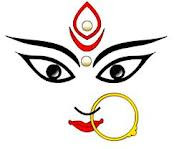Coming Date Vasant Panchami 2013
Vasant Panchami is Known as Goddesh Saraswati Jayanti and Coming on 15 February 2013 and According to Gujarati Month of Magha, which falls during January-February, (see calendar). ‘Vasant’ comes from the word ‘spring’ as this festival heralds the beginning of the spring season.
About Vasant Panchami
As ‘Diwali’ – the festival of light – is to Lakshmi, goddess of wealth and prosperity, and ‘Navaratri’ is to Durga, goddess of power and valor, Vasant Panchami is to Saraswati, the goddess of knowledge and arts. Vasant Panchami is a famous festival that marks the end of the winter season and ushers in the springtime. Sarasvati is the Hindu goddess of the Vasant Panchami festival. Young girls wear bright yellow dresses and participate in the festivities. The color yellow holds a special meaning for this celebration as it signifies the brilliance of nature and the vibrancy of life. The whole place bursts with yellow during the festival.
People dress in yellow and they offer yellow flowers to others and to the gods and goddesses. They also prepare and feast on a special pastry called kesar halwa orkesar halva, which is made from flour, sugar, nuts, and cardamom powder. This dish also includes saffron strands, which gives it a vibrant yellow color and mild fragrance. During the Vasant Panchami festival, India’s crop fields are filled with the color yellow, as the yellow mustard flowers bloom at this time of the year. Pens, notebooks, and pencils are placed near the goddess Devi’s feet to be blessed before they are used by students.
On this day Goddess Saraswati is worshipped in various names and fames – the Goddess of Learning, the deity of Gayatri, the fountain of fine arts and science, and the symbol of supreme vedantic knowledge.
Vasant Panchami Celebrations
Vasant Panchami festival of spring is celebrated with great fervour and joy amongst Hindus. Basant Panchami tradition includes wearing traditional yellow colour clothes, cooking sweet saffron rice and visiting friends and relatives to distribute sweets and gifts.
You will see the pure, bright and sunny yellow colour dominating the whole country on this particular day. The Basant Panchami celebrations also comprise an elaborate puja of Goddess Saraswati who is worshipped with full dedication.
People also feed Brahmans on Vasant Panchami believing that their ancestors are accepting the food. The occasion is also celebrated by flying kites and merrymaking.
Vasant Panchami Puja rituals
The idol is in white, symbolizing purity. The sari of the Deity is white or yellow dyed in the natural dye made from “Shiuli” flowers.
The place where Saraswati is seated is all decorated with fresh flowers and rangoli and the design of a fish is considered auspicious.
A flat low stool made of wood is covered with yellow cloth and the idol is placed on it, facing towards the east.
The face of the idol remains covered till the priest begins chanting of mantras at the commencement of puja.
A green coconut is placed in an earthen pot with a red checked cotton cloth called “Gamocha”.
Besides the actual puja flowers there are also the most significant flower called Palash that is used in the ceremony.
Students place their books and pen in front of the goddess to seek blessings on this auspicious day.
The offerings made to the goddess consist of fruits- most significant are berries from the wild plum tree. Other fruits include tapioca. Sweets must include puffed rice, jaggery and yogurt.
Family members bathe early and dress in yellow attire before assembling in front of the Goddess.
The earthen pot is tied with a string which is untied on the next day by the priest before visarjan or the immersion ceremony.
A havan is done by the priest using special wood, ghee, joss sticks and incense. A diya or lamp is lit beside the prasad.
Aarti is performed by the priest twice in day, in the morning and then again in the evening.
Nobody touches books on that day as it is believed that the goddess is blessing the books.
Vasant Panchami Greetings2013
Vasant Panchami Images
























